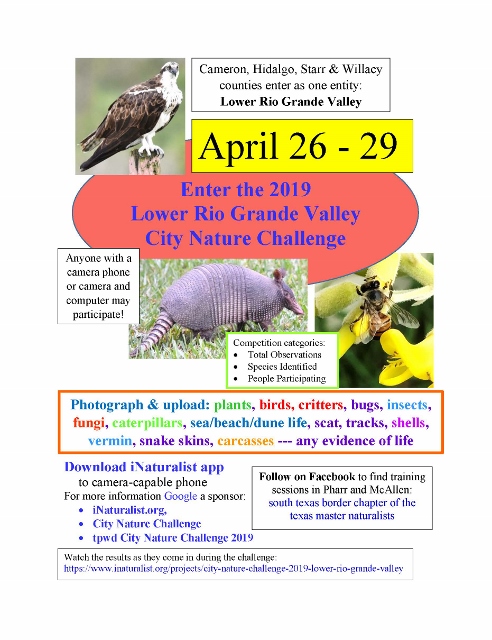For all of you who joined the 2019 Great Backyard Bird Count — the many results categories are available at the below link! It’s a pretty exciting world-wide look at birds!
Closer to home:
The Barn Swallows are back! Too late to include in my GBBC list, but fun all the same!
They’re in full breeding colors, rich Navy blue with peach underparts. Barn Swallows are some of the prettiest tiny birds; their wings nearly reach the tip of their dramatically forked tail.

There are SO many of them dipping and fiving over the resaca, I think they’re worthy of a collective bird noun — for swallows, one site lists three — an idiom of swallows, metaphors of swallows or an expression of swallows — the last one makes sense — they dart and zip so quickly, you think you’re only looking at an expression.
Oh, here’s another collective noun: a SWOOP of swallows — Yep! That’s the best fit. They’re so fun to watch as they “eat on the wing.”
One contingent of the swoop of swallows spent two cold and windy days outside my window hovering in a wind-protected corner of the house.
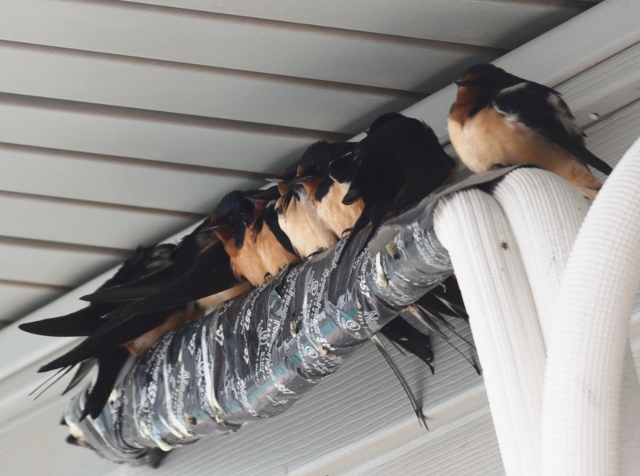
Now the weather’s improved, they’re performing acrobatic sorties over the resaca and lower acres attacking “enemy” bugs in an aerial show worthy of note.
Barn Swallows are insectivores; they eat a wide variety of flying insects, especially flies (including house flies and horse flies), beetles, wasps, wild bees, winged ants, and true bugs. They also eat some moths, damselflies, grasshoppers, and other insects, and a few spiders and snails. They only occasionally eat a few berries or seeds. — Source: https://www.audubon.org/field-guide/bird/barn-swallow
BOLO — Be On The Lookout
Spring is the time of year for great surprises. Be on the lookout for Prairie milkweed — zizotes, (Asclepias oenotheroides) which might be pushing up in your yard, along roadsides, undisturbed fields, banks of irrigation levees or ditches . . . .
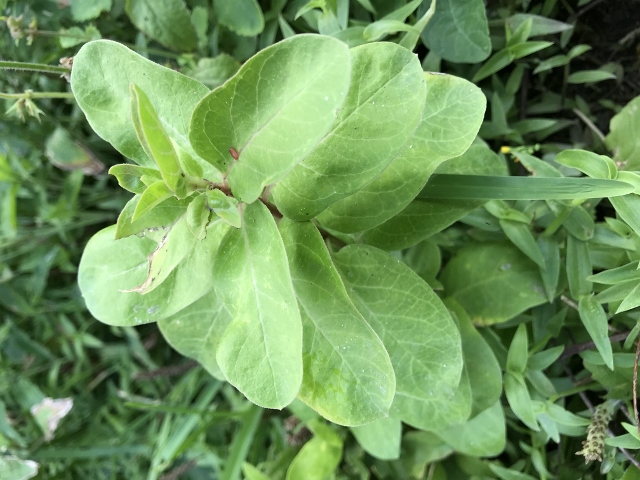
Keep your eye on them because soon to follow the zizotes might be two milkweed bugs — One good; one not.
Question: When is having a Black Belt not good?
Answer: When it’s on a Large Milkweed Bug
Not so good for milkweed
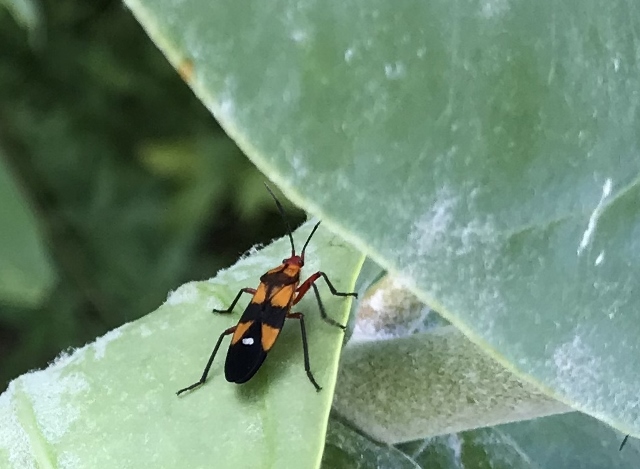
The Large Milkweed Bugs eat seeds and plant stems – pierce seed pods, eat seeds; suck the life out of the plant
Helpful ID — Rectangular black “belt” at midsection of body. Orange head
There’s help:
Question: When is it good to find an assassin in your garden?
Answer: When it’s a Milkweed Assassin Bug
Not so good for the Milkweed Bug!

Milkweed Assassin Bugs attack the Large Milkweed Bugs; they pierce them with a large fang and feed on the insides of the insects that attack the milkweed plant. I know, rather descriptive, but that’s what I read.
The Milkweed Assassin Bug can deliver a sharp pain to humans, causing pain, itch and small bump for a couple of days: best not to handle these bugs.
Adult Milkweed Assassin Bugs are smaller in size than the adult Large Milkweed Bug.
Helpful ID: Think triangles! Triangular black spots at midsection of body — No broad black belt from side to side at midsection like the Large Milkweed Bug.
Black or orange triangle seem to be apparent on the back of the good bug: black triangular head, black triangular spot in mid-section and at base of body. Black triangles superimposed on orange triangles at sides of body — using imagination.
Texas Thistle Time of Year
If you followed last year’s expose on Texas Thistle (Cirsium texanum) — “Thistle While You Work,” February 15, 2018) https://rgvctmn.org/anitas-blog-thistle-while-you-work/ — you’ll be thrilled to see what a giant specimen I have this year!
Due to wind, flying thistle seed, and probably a bird or two, I had quite a few thistle upstarts this year. They’re easy enough to mow over and be rid of. I kept one for research — well, for fun, if you must know — and for photo opportunities for the City Nature Challenge that’s happening toward the end of April.
My research-grade Texas Thistle is at least six feet tall; it’s many-branched and already busy with bees and bugs.
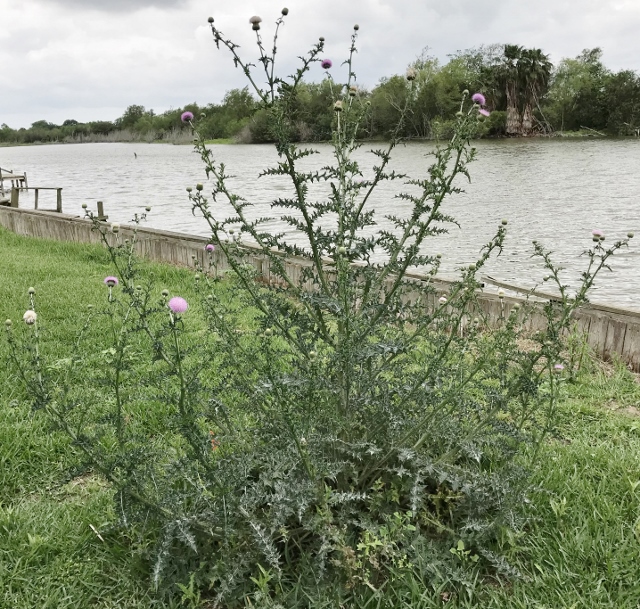
Texas Thistle (Cirsium texanum)
If you’ve discovered a Texas Thistle in your yard, keep it for a while. It’s a great plant to practice photographing the bloom stages, what visits it, and for uploading to iNaturalist in preparation for the City Nature Challenge.
iNaturalist has ID’d this as Western Honey Bee
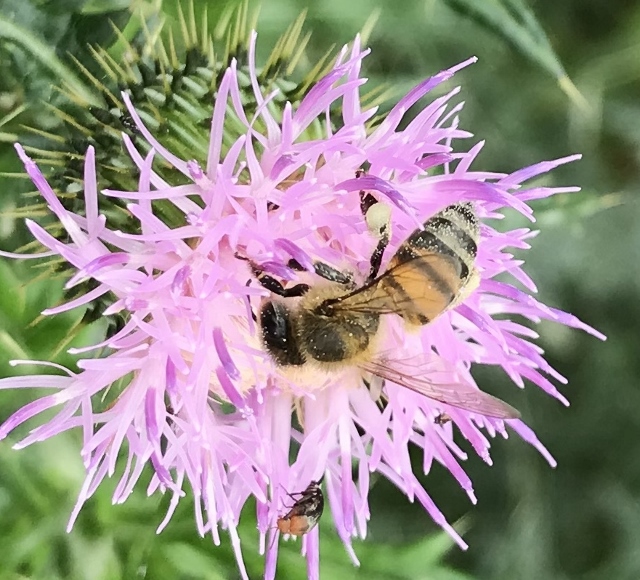
Another source has ID’d the bugs in the following four photos: “Texas Bug Book — The Good the Bad & the Ugly” by Howard Garrett & C. Malcolm Beck. University of Texas Press. I’m awaiting confirmation on iNaturalist.
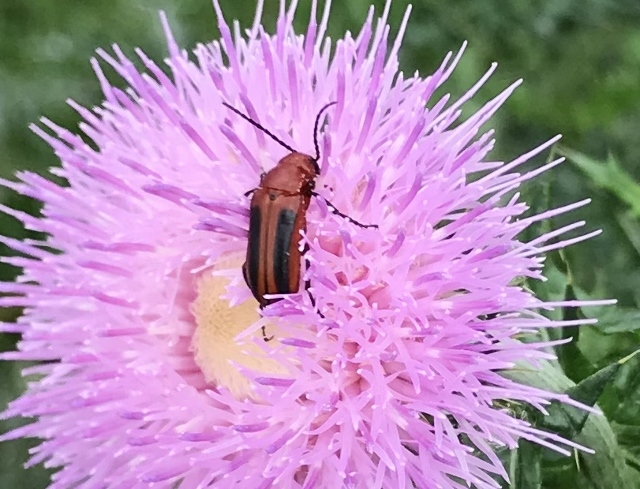
Possibly Batyle suturalis
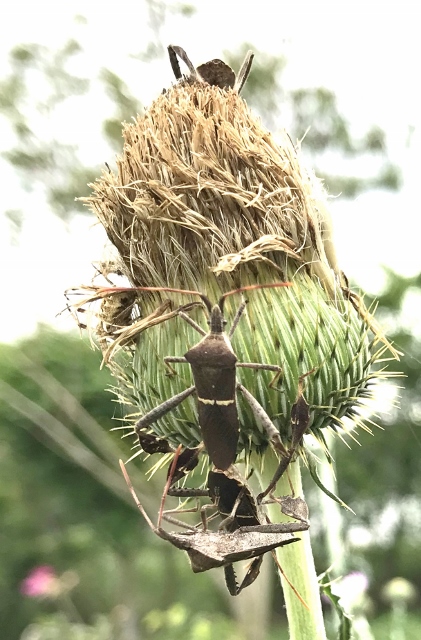
These bugs are about ¾ inch long. Leaffooted bugs are in most gardens and natural areas. They dine on many food crops and some ornamentals. Beans, citrus, peas, pecans, potatoes, tomatoes and wild areas.
Adults and nymphs like to suck the juice from leaves, shoots, fruits, buds, and seeds. They can attack and damage crops of several species such as tomatoes, cotton, peaches, oranges.
Natural control is birds, snakes, and lizards, the tachinid fly, assassin bugs, wolf spiders and frogs.

Tribe Coccinellini (Lady Beetles)
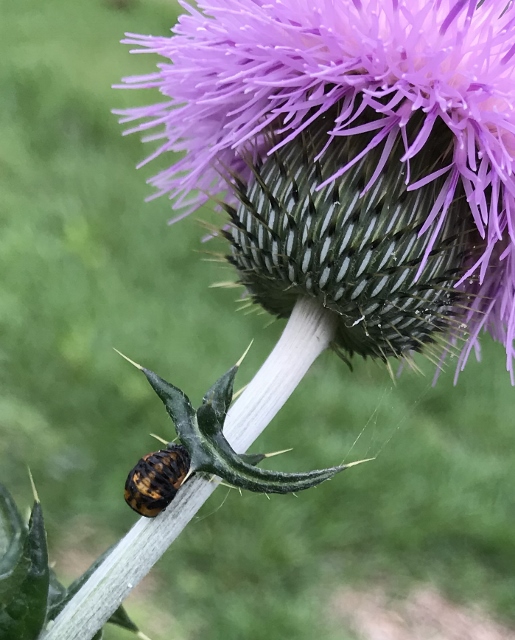
VOILA! A “Convergent” lady beetle pupa — possibly
See how much fun one plant can be?
OK — Save the dates — April 26–29, 2019:
